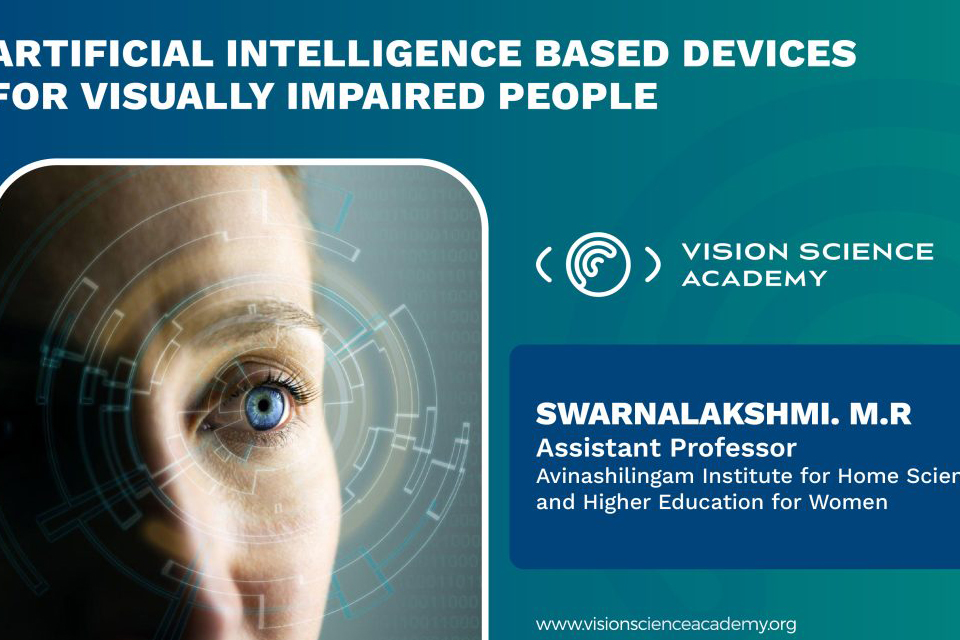Artificial intelligence is rapidly changing the landscape of assistive technology, moving beyond simple aids to create intelligent and adaptive systems for the visually impaired. Traditionally, assistance for those with visual impairments relied on tools that offered limited functionality. However, with the advent of machine learning, we're witnessing a surge of devices capable of understanding and responding to the environment in real-time. AI, in this context, is not just about computation; it's about understanding context, making inferences, and adapting to the needs of the individual user. These advancements go far beyond what was previously conceivable, offering the potential to significantly improve independence and quality of life.
The integration of AI enables devices to perform a range of complex tasks, from real-time object recognition to navigating complex environments and reading text. This level of sophistication is made possible by deep learning algorithms that can analyze vast amounts of data, learning to identify patterns and make predictions with impressive accuracy. This goes beyond simple detection; it's about understanding the nuances of the world and providing actionable information that is relevant and meaningful to the user. The application of ai provides a more holistic and personalized approach to assistive technology, moving towards a future where technology seamlessly integrates into everyday life for those with visual impairments.

Computer vision is a field of computer science that focuses on enabling computers to "see" and interpret images and videos much like the human vision system does. It involves using algorithms to analyze visual data, detect objects, and understand the context of a scene. For visually impaired individuals, computer vision is a game-changer. It allows devices to act as a surrogate for their eyes, providing real-time information about the world around them. This could include identifying everyday objects, reading signs, or even recognizing faces of people the user knows.
Computer vision technology plays a crucial role in enabling assistive devices to accurately detect and understand the environment. This information is then used to provide meaningful feedback to the user, either through audio cues or haptic feedback. For example, a computer vision system could detect a door and describe it to the user including the direction, or read text from a menu. This functionality goes beyond mere object recognition; it involves understanding relationships between objects and the overall context. By processing these images and videos through convolutional neural networks, it accurately identifies elements within an image and presents them to the user in a useful way.
Kopin, a microdisplay manufacturer based in Westborough, is at the forefront of this revolution with its innovative "neuraldisplay" technology. The “neuraldisplay” is a cutting-edge micro-oled display designed for integration into AR glasses. This technology goes beyond simple visual display capabilities by incorporating onboard ai accelerator and advanced computer vision functionalities. Kopin's neuraldisplay uses AI to enable its devices to recognize an object in real time and to understand the surrounding environment. The combination of computer vision and ai capabilities allows the “neuraldisplay” to provide more meaningful assistance to the user.
The neuraldisplay combines eye-tracking capabilities with its computer vision system, allowing it to tailor the displayed information to the user’s focus and specific needs. Furthermore, the ai can analyze the user's vision and adjust the display output to optimize for the user’s vision. This advanced level of customization and adaptability signifies a significant step forward in assistive technology for the visually impaired. The ai enables the system to perform complex tasks like segmentation, facial recognition, and image classification, all in real-time and within a small form factor.
Augmented Reality (AR) technology, which overlays digital information onto the real world, holds immense potential for improving the lives of the visually impaired. AR headsets, when combined with advanced computer vision and ai, can provide real-time information about the user’s surroundings. Imagine being able to “see” through the lens of an ai that can instantly detect objects, read text, and even recognize faces. This functionality enables independence and confidence, allowing visually impaired individuals to move more freely and engage with the world on their own terms.
The ability of AR headsets to combine real-world views with relevant digital information can dramatically simplify tasks like navigation, reading, and social interactions. With real-time object recognition and image recognition capabilities, the user can easily find what they are searching for. The ai within the AR headset can automate processes and provide specific details, making it easier to perform everyday activities. With AR headsets, those who are visually impaired can have an assistive tool that is both powerful and seamless to use.

A crucial aspect of any effective assistive technology is its ability to adapt to the individual needs of the user. The NeuralDisplay AR headset is designed with this in mind, incorporating sophisticated mechanisms to adjust the display and functionality based on user's vision. For example, the system can detect the pupil dilation and adjust the brightness and contrast accordingly. The system also allows the user to customize the user’s vision parameters. The neuraldisplay system also factors in the user's eye dominance to provide an optimal experience.
Furthermore, the ai within the headset learns from user interactions and continually adjusts to provide the most accurate and helpful information. This includes not only visual adjustments but also auditory cues and feedback. The system can also adjust the interpupillary distance for each user. The system’s ai also takes into account the users eye tracking data and optimize performance for each individual. This personalization ensures that the headset is not only usable but also effective and comfortable for each unique user.
The potential use cases for AI-powered vision systems, especially for the visually impaired, are incredibly diverse and far-reaching. In addition to basic navigation and object recognition, these systems could be used to assist in a multitude of tasks like grocery shopping by identifying specific products on shelves or reading expiry dates on labels. In the ecommerce environment, the technology can help the visually impaired browse online stores and choose items they need. The ability to search for specific items would allow for more independence in everyday life.
AI-powered vision systems can also assist with social interactions by enabling the user to recognize faces and identify people. This is especially helpful in environments with multiple individuals. Furthermore, these systems can be used to analyze video streams, allowing a person with a visual impairment to have a better understanding of events that are happening around them. The use case for AI-powered systems continues to grow as the technology continues to evolve. The development of these systems is poised to empower visually impaired people with tools that facilitate engagement, independence, and productivity.

High-performance AR glasses depend heavily on their optical components to deliver clear and crisp visuals while maintaining a comfortable and lightweight design. The micro-oled display is a critical component, providing a high-resolution and energy-efficient display source. In this case, Kopin's neuraldisplay uses a 1.5-inch square micro-oled screen. The optical system must be carefully designed to ensure that the projected image appears sharp, clear, and focused for the user, and that elements like distortion are minimized. This is a delicate balancing act that requires precision engineering and high-quality materials.
The design also has to ensure the optical system minimizes common problems associated with AR, such as nausea. By controlling the way light interacts with the user's eye, the AR glasses can create an immersive experience without causing discomfort. Optical components must also be designed to minimize the visual distortion to allow the user to accurately perceive the environment. These components have to work together to create a seamless and high-quality user experience that does not interfere with the users vision.
The accuracy of computer vision work is essential to creating reliable assistive technology for the visually impaired. A lot of research has been done in areas like deep learning and image analysis, to make computer vision systems more robust and accurate. To accurately detect objects within the user’s environment, computer vision systems also have to perform well across different lighting conditions and from different angles. These challenges require a deep understanding of how the human brain processes visual information.
Researchers are constantly working on refining algorithms and training datasets that are used for computer vision. By using more diverse set of data, computer vision systems can more effectively generalize, meaning they will work correctly in different environments. As computer vision models improve, they are also able to analyze unstructured data more effectively. This allows for a more accurate and comprehensive view of the user's surroundings. It is important to continue to improve accuracy as the use of computer vision becomes more prominent in assistive technology.
A major challenge in the development of AR and VR headsets is motion sickness or nausea. These are common problems that occur when there is a mismatch between what the user sees and what their body feels. This mismatch between visual perception and the user’s inner ear can be extremely nausea-inspiring. The makers confess, that creating comfortable and functional ar technology is an ongoing challenge.
To avoid these issues, AR headset designers must carefully consider the latency of the visual display, the stability of the image, and the interpupillary distance, all of which can affect the user’s vision. High-quality optical components and accurate eye tracking also play important roles in reducing discomfort. Another method is using techniques that minimize the visual lag. By implementing these strategies, developers can minimize the likelihood of nausea and improve user satisfaction with AR technology.
The ability to save and share images and videos captured through AR glasses offers an extra layer of utility and could offer revenue opportunities. The ability to record and save allows the user to review data or use images and videos for different purposes. For example, they can save images of documents or signs to be read later. However, such functionality also raises some concerns about privacy, which must be carefully addressed. The user must also agree to the user agreement, cookie policy and privacy policy.
To safeguard the privacy of users, AR systems should include robust privacy controls and transparent data usage policies. The ability to update your choices regarding sharing and storage of data is crucial. The use of an authentication process can ensure that the user's personal information is secure. Responsible development of this technology means respecting user privacy and protecting sensitive information. While the “ability to save” can assist the user in a variety of ways, it must be used ethically and responsibly.
Table 1: Key Features of Kopin's NeuralDisplay Technology
| Feature | Description |
|---|---|
| Micro-OLED Display | High-resolution, energy-efficient 1.5-inch square display designed for AR glasses. |
| Onboard AI Accelerator | Dedicated hardware for fast and efficient processing of AI algorithms, enabling real-time computer vision tasks like segmentation, facial recognition, and image classification. |
| Eye-Tracking | Tracks the user's eye movements to optimize the display output and tailor information to their needs, including pupillary dilation adjustments. |
| Computer Vision | Allows the system to understand its environment by analyzing images and videos in real-time, detecting objects, and recognizing faces and text. |
| Adaptive Adjustments | Adjusts display brightness, contrast, and focus based on user's vision and ambient lighting to provide a comfortable and clear viewing experience. |
| Real-Time Processing | The neuraldisplay system provides real-time analysis of the environment, enhancing the speed and efficiency of providing actionable information. |
Table 2: Potential Use Cases for AI-Powered Vision Systems
| Use Case | Description |
|---|---|
| Navigation | Real-time guidance for navigating indoor and outdoor environments, including identifying obstacles and providing directional cues, including the direction. |
| Object Recognition | Identifying everyday objects in the user's surroundings, providing descriptions of these objects and their location. |
| Text Reading | Reading aloud text from documents, signs, and labels, making it easier for visually impaired individuals to access written information. |
| Facial Recognition | Recognizing faces of known individuals, aiding in social interactions. |
| Ecommerce | Helping visually impaired users browse products, search for specific items, and read product details when shopping online. |
| Video Stream Analysis | Understanding and describing events in videos or live streams, enabling users to access information in a variety of formats. |
| Grocery Shopping | Assisting users to identify specific products on shelves, read expiry dates, and find what they need. |
| Personal Data Access | Allowing users to use images and videos to review data, use images for different purposes and search specific parts of an image. |
AI and computer vision are revolutionizing assistive technology for the visually impaired by enabling devices to understand and interact with their environment in real-time.
Kopin's neuraldisplay technology integrates ai, eye-tracking, and computer vision to create advanced AR glasses for the visually impaired.
Computer vision helps assistive devices accurately detect objects, read text, and recognize faces, providing crucial information to users.
AR headsets can significantly improve the lives of the visually impaired by overlaying digital information onto the real world and simplifying various tasks.
Neuraldisplay AR headsets adjust to individual user needs by considering factors like pupillary dilation and other vision parameters to optimize the display.
AI-powered vision systems have numerous use cases, including navigation, object recognition, text reading, and improving social interactions.
The optical components of AR glasses, such as the micro-oled display, are crucial for providing a clear, sharp, and comfortable visual experience.
The accuracy of computer vision is constantly being refined through advancements in deep learning and image analysis techniques.
Nausea can be a common problem with AR headsets, and it can be avoided through careful design and the use of high-quality optical components.
The ability to save and share images and videos captured through AR glasses can be useful, however, privacy and security must be prioritized to maintain user trust.
Contact: Ashley Wu
Phone: +86 17773983073
E-mail: [email protected]
Add: 708 Room A Buiding Huafeng International Robot Industrial Park Xixiang Bao'an